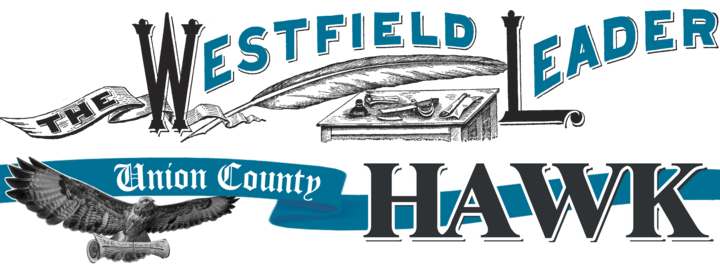WESTFIELD — After two public-input meetings in July and impassioned feedback from residents, especially those living around Edison Intermediate School (EIS), Westfield town officials and the recreation commission unveiled a scaled-back version of their Edison School Multipurpose Fields Project Monday night that reduces the project’s scope and cost significantly.
Originally estimated at $18.2 million after the fields project was unveiled in June, the new Edison Multipurpose Fields site is priced at $9 million and covers “approximately 60 percent of the surface area (~250k sq ft),” according to the recreation commission’s presentation. The scrapped plan that was presented in June proposed 400,000 square feet of artificial turf. The project acquired the nickname “Mini-MetLife Stadium” among some of its most vocal detractors.
In addition to a reduction of square footage, the field plan now features one unlit, natural-grass baseball field; two artificially-turfed, lit, multi-purpose fields, and a second, turfed baseball field.
The rendering presented by the recreation commission showed the turfed baseball field within range of the lights. The project, moreover, also will include “prefabricated restroom facilities,” noted Monday’s presentation, along with open, natural-grass field space used for different recreational activities.
The presentation, led by recreation commission member Russell Howell, stated that, “approximately 40 percent of the Edison Fields project will remain “natural grass,” and the fields’ complex will be open for EIS staff and students “to use both natural grass and/or artificial turf for physical education, recess and other uses.”
Edison fields “are intended exclusively for Westfield residents, athletes and students,” explains the new plan. These intended users are Westfield schools’ band and sports; Town of Westfield sports teams and EIS gym classes and “activities.”
Given that the proposed Edison fields complex would be located on land owned by the Westfield Board of Education, and, as outlined in a letter of intent released in June, the land would be leased to the township, there is no “Green Acres” requirement, noted Monday’s presentation. This means, by law, that the fields complex at Edison can be used exclusively for Westfield residents and athletes if the town chooses.
Field prohibitions also were shared during Monday night’s meeting, specifically “intended prohibitions,” which include “no usage during Kehler [Gary Kehler Football Stadium] events known to draw larger crowds.” Events listed were varsity football, track invitationals and graduation ceremonies. Other intended prohibitions include “limited, or no usage” during “certain EIS evening events,” and “seasonal downtimes.”
And critically, given major concern from residents opposed to the project, with LED lighting being cited, the recreation commission’s presentation said lights would be on “no later than 9:45 p.m., as with existing town recreation lighting.”
Monday’s meeting was certainly not limited to a release of information, but saw many residents — and even town officials — speak to the developing fields project at Edison.
Westfield Mayor Shelley Brindle kicked off the night’s proceedings, addressing a packed cafeteria at Edison Intermediate School with residents, town officials and even student-athletes in attendance. Many of the youth in attendance could be seen sporting athletic gear representing the likes of Westfield Soccer.
“Over the past 20 years, youth sports have grown dramatically,” said Mayor Brindle. “We don’t have adequate fields to meet our kids’ participation.” Her comments touched upon a major area of contention, turf fields, with many residents at prior meetings, and again on Monday, objecting to artificial turf in principle. Those against turf fields, such as Citizens for Responsible Athletic Field Development (CRAFD), a Westfield residents’ group, oppose synthetic turf in town due to it being “environmentally irresponsible,” “unhealthy and unsafe” and “contrary to the town’s character,” according to a document outlining their positions in opposition to the Edison Fields proposal.
During her comments, Mayor Brindle explained that, “in spite of the town’s best efforts to adequately maintain our grass fields,” it is “just not possible given the hours of continuous play from thousands of athletes.”
The recreation commission echoed the mayor’s position and, in its presentation, said outright as part of its PowerPoint, “Grass Fields Cannot Sustain OUR Demand.” Moreover, the commission stated in the presentation that “any attempt to maintain existing natural turf fields would fail…while also requiring significant investment…and would involve the use of chemicals which are not used on Westfield BOE properties today.”
Many town residents, backed up by Ward 3 Councilman David Contract, who spoke at the tail end of the meeting, did not buy the complete dismissal of grass fields in favor of turf without further examination.
“I think we need to keep studying grass versus turf,” said Councilman Contract. “Let’s make sure we fully evaluate both options before we make a final decision.”
Councilman Contract piggybacked on a public feedback section of the meeting that saw many residents offering their reactions to the updated proposal. Along with turf fields being objectionable to many in opposition to the unveiled, scaled-down project, issues such as LED field lighting was an area of major disagreement.
Allison Emery of Rahway Avenue, a resident living in close proximity to the proposed fields project and member of the resident group CRAFD, took time during the public-comment portion of the meeting to communicate CRAFD’s objections to the project.
“Our group is committed to increasing fields throughout Westfield in a responsible way,” said Ms. Emery. “In a nutshell, we believe grass is healthier and safer than artificial turf; lights do not belong in residential neighborhoods; fields should be spread around town equitably, and it should be developed in a financially-responsible way.”
Ms. Emery said she wants Edison fields to be upgraded, along with more school properties being upgraded, but with “lush, natural grass fields that reflect the character of Westfield.”
In addition to Ms. Emery’s comments, the night featured residents expressing concerns regarding noise, storm-water dangers, and the traffic and safety impact on the EIS community.
The recreation commission’s presentation anticipated many of these issues, and outlined in detail ways to combat floodwater while expressing serious concern regarding the state of Robinson’s Branch, or Robinson’s Creek, as referred to by some Westfield residents.
During the last town council meeting held on September 14, Mayor Brindle announced the formation of the Westfield Infrastructure Resiliency Committee (WIRC). The new committee “will be tasked with assessing our current town-wide storm-water infrastructure and its capacity to handle these severe weather events in the future,” the mayor said during that meeting, following the devastation of Hurricane Ida at the beginning of the month.
“The flume and other general concerns regarding Robinson’s Branch are explicitly in scope for this new committee, regardless of whether or not the Edison Multipurpose Fields Project proceeds,” explained the recreation commission’s presentation. “We are confident and committed that runoff would likely be improved upon with this project, especially post-Ida. As per New Jersey Department of Environmental Protection (NJDEP) standards, athletic fields are required to be designed to either meet or reduce the current rate of rainfall runoff. The rate of runoff cannot be increased.”
In terms of the lighting issue, the recreation commission believes that lighting is critical to solving the capacity issue, according to the presentation. With the advancement of LED field-lighting technology, offering “pinpoint accuracy,” being highly effective at “lighting only what is intended to be lighted,” explained the presentation.
The recreation commission also said that “parking and traffic safety is paramount.” The commission said parking-assessment work is underway by Spiezle Architectural Group, the firm hired by the town to help oversee the Edison Fields Project. According to the presentation, the parking assessment could be done by Wednesday, December 1.
In regards to mitigating dangers posed by increased traffic, the commission said, “common sense policies/restrictions for field scheduling will be key to mitigating concerns.” The commission stated that it “would not be comfortable recommending or supporting any proposal that increases pedestrian-or traffic-safety risks.”
While the majority of speakers Monday objected to the scaled-down proposal, their voices were not the overwhelming majority as was the case at the input meetings hosted by the recreation commission in July. Resident speakers, many associated with town sports, or parents of kids participating in athletics in Westfield, were vocal in their support of the fields project that could potentially lead to a capacity increase for Westfield’s young athletes. Many residents expressed difficulties involved in transporting their student-athletes out of town for practices and also described the dire state of many overburdened athletic fields in town.
During prior public meetings, such as town council meetings held over the summer, some residents described Westfield’s fields as an embarrassment.
Paul Grygiel of Salter Place was one resident to take to the podium on Monday night expressing support for the proposed Edison Fields Project.
Mr. Grygiel described himself as a “Westfield resident, taxpayer, parent, former soccer coach, and long-time and current soccer player.” As a “city planner by training” who has attended “thousands of meetings of this type,” he urged officials on Monday “to take into account the broader public good,” while urging the town to move forward with the plan.



